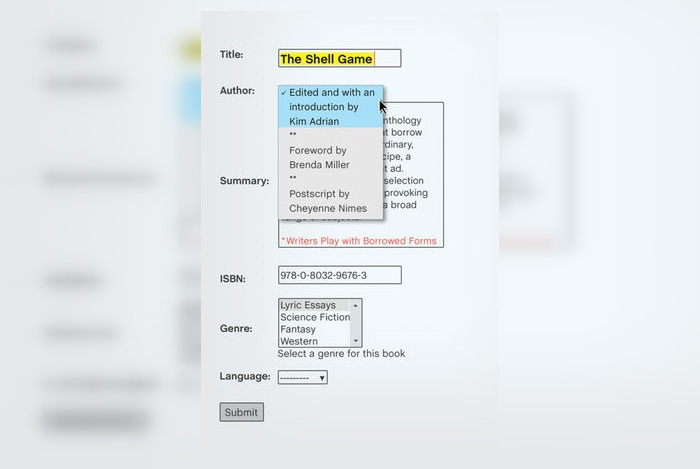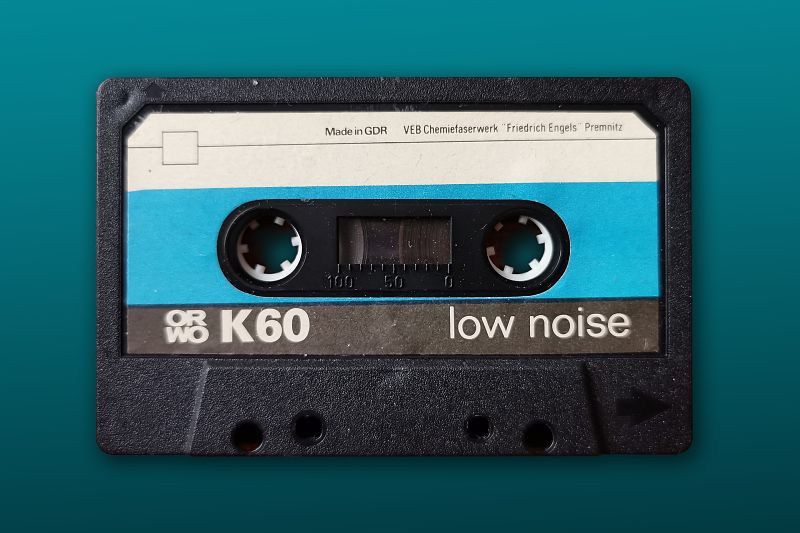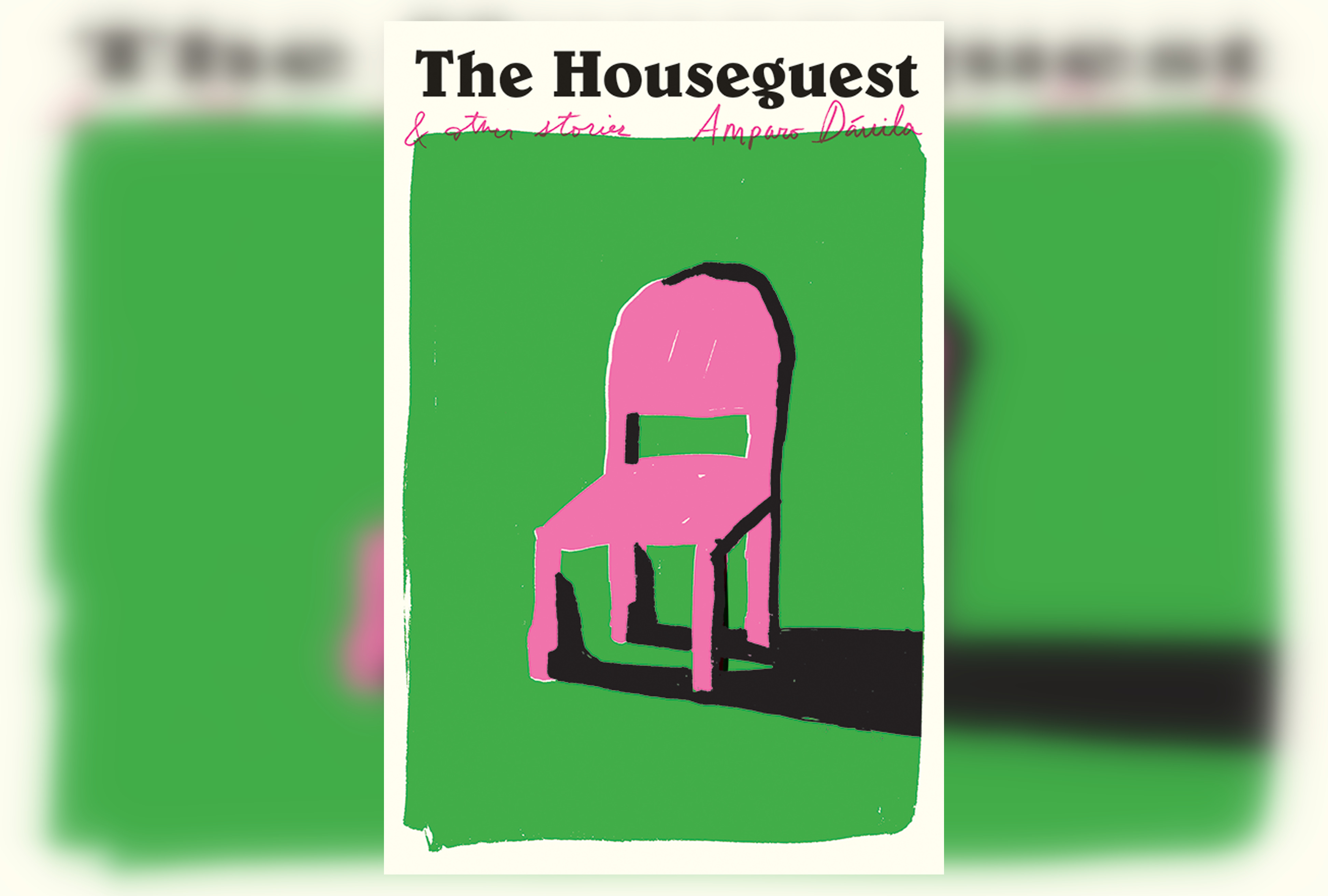If good creative writing sparks the instinct to write, The Shell Game provides ample embers to inspire a wide range of writers. Edited by Kim Adrian with a foreword by Brenda Miller, this new anthology published by The University of Nebraska Press is devoted to a type of nonfiction called the hermit crab essay. The hermit crab essay is a work whose form embodies the content in bold, literal, and symbiotic ways. (Think: an essay on accomplishments organized as a resume, a meditation on the daily grind written as a to-do list, etc.) When pondering this particular approach, where a lyric essay “borrows” another form to tell its story, Adrian muses that a hermit crab essay’s formal, often bizarre looking exterior can allow it to “exert its full magic, tempting one’s inner aesthete with its very oddness, forcing upon its readers a private debate: Is this a thing of beauty? An ingenious expression of the human imagination? Or a cop out?”
Miller says a hermit crab is “a creature who would die without finding a borrowed shell.” Writers are often taught that form should always serve content, and not the other way around. There is a danger in sacrificing material on the altar of a forced, intriguing form. However, explicitly calling attention to an interdependent relationship, as in a hermit crab essay, gives us a new perspective to consider. Adrian commands this attention with an introduction outlined as an entry one might find in a natural history encyclopedia with headings such as “taxonomy,” “alternative names,” “number of species,” “anatomy” and even “diet” describing a hermit crab essay. This unusual structure, as seen in the essays throughout the anthology, allows for material that otherwise might not rise to the surface, material that would be fundamentally a different creature in any another form. Adrian says this approach helps the writer “get to something real.”
The topics in this book vary as widely as the “shells” in this selection of hermit crab essays. In each instance, the content and form play off of each other. I’ll highlight a few of my favorites: Joey Franklin’s “Grand Theft Auto” essay is organized like a crime report, complete with locations and time stamps, as he describes the experience of having his car stolen; Sarah McColl’s “Ok, Cupid” outlines a meditative look into dating; Laurie Easter’s “Solving My Way to Grandma” embodies an elaborate crossword puzzle, the essay organized into columns of clues, as she puzzles over her daughter’s surprise pregnancy; Dinty W. Moore’s “Son of Mr. Green Jeans” essay draws on alphabetically arranged headers to stitch together a braided, vignette essay on piecing together his thoughts on fatherhood; Brenda Miller’s “We Regret to Inform You” chronicles her life’s disappointments through a series of humorous and recognizable rejection letters; Judith Sornberger’s “Piecing the Quilt of Valor” uses quilt instructions for headers to describe the enormous challenges her veteran son faces as she makes him a quilt, knowing it will not heal but may bring comfort; Randon Billings Noble’s “The Heart as a Torn Muscle” houses a narrative about a potential affair formatted as a heart medical report containing sections such as “symptoms,” “when to seek care,” and even “recommended readings” with a list of notable literature featuring ill-fated affairs.
The anthology is plump with other notable forms: a Rubik’s cube using white space, an eBay advertisement, architectural blueprints for a house, board games, standardized tests, codes, legal documents, footnotes, questionnaires, pamphlets, how-to directions, and abecedarian ordering.
I’m a fan of lyric essays, making it easy to enjoy this collection. As with any anthology, not every piece will resonate. But if any writer stumbles into The Shell Game, even for a few essays, they are bound to come away with some fresh ideas and new perspectives, a renewed hankering to examine the quotidian and evaluate the details and textures around them to render them in new, yet recognizable ways. The anthology makes sure of it. The postscript by Cheyenne Nimes provides no directions or explanation, just a list of over 400 more forms that could yield fruitful results, an open invitation to the reader to participate.
As Miller says, the term “hermit crab” has “become an integral and accepted part of the creative nonfiction lexicon… and the possibilities for the form grow day by day.” The Shell Game offers an enjoyable read, but also a host of potential creative examples and exercises if one is willing to take the leap. Anyone from the expert essayist, lay reader, or a teacher looking for an evocative anthology will find something of value in these pages.




